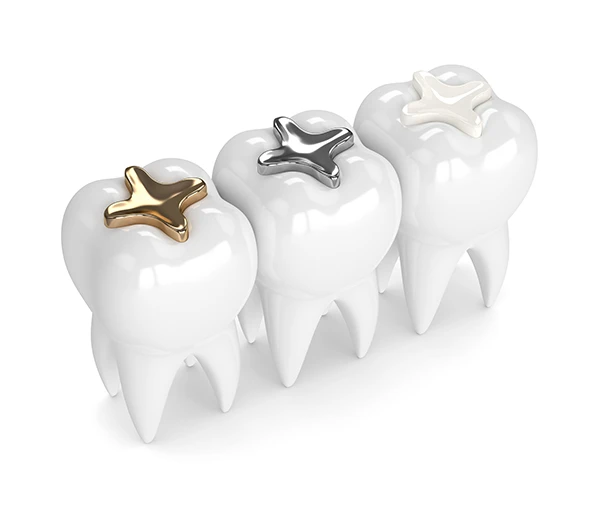Common Pains to Expect After Getting Your First Filling
Posted on 2/15/2025 by Highridge Dental Care Folsom |
 Getting your first dental filling can be a nerve-wracking experience, especially if you're unsure what to expect afterwards. While fillings are a routine procedure, some discomfort and sensitivity are common in the days following the treatment. Understanding what to expect can alleviate anxiety and help you recover smoothly. Getting your first dental filling can be a nerve-wracking experience, especially if you're unsure what to expect afterwards. While fillings are a routine procedure, some discomfort and sensitivity are common in the days following the treatment. Understanding what to expect can alleviate anxiety and help you recover smoothly.
Types of Filling Materials
The type of filling material used can influence the level of post-operative sensitivity.
| • |
Amalgam fillings: Made from a mixture of metals, amalgam fillings are known for their durability and affordability. However, they can cause greater sensitivity to hot and cold due to their higher thermal conductivity compared to other materials. |
| • |
Composite fillings: Composed of tooth-colored resin, these fillings offer a more aesthetically pleasing option and bond directly to the tooth structure, providing better support. Composite fillings typically cause less sensitivity, but may require more frequent replacement than amalgam fillings. |
| • |
Glass ionomer fillings: This type of filling releases fluoride, which can help prevent further decay. However, glass ionomer fillings are not as strong as other materials and are mainly used for smaller cavities and in areas with minimal chewing force. |
Common Pains and Discomfort
After getting your first filling, some level of pain and sensitivity is normal and should gradually subside within a few days. Here are some common experiences:
| • |
Sensitivity to temperature: You might feel increased sensitivity when exposed to hot or cold foods and beverages. This is due to the filling material’s different thermal conductivity compared to natural tooth structure. It's recommended to stick to lukewarm fluids and soft foods during the initial recovery period. |
| • |
Tenderness and discomfort: The area around the filling might feel tender and sore, especially when chewing. Over-the-counter pain relievers such as ibuprofen or acetaminophen can help alleviate this discomfort. |
| • |
Sharp pain when biting: If you experience a sharp, localized pain when biting down on the filled tooth, it could indicate that the filling is slightly too high. Contact your dentist for an adjustment, where they will gently smooth out the filling to eliminate the discomfort. |
Managing Post-operative Discomfort
Here are some tips for managing discomfort following your first filling:
| • |
Follow your dentist's instructions: They will provide specific guidance on caring for your teeth and managing any discomfort. |
| • |
Take over-the-counter pain medication: If needed, use ibuprofen or acetaminophen for pain relief. Consult your pharmacist or physician if you have any underlying medical conditions or are taking other medications. |
| • |
Use a warm salt-water rinse: Mix a teaspoon of salt with warm water and gently rinse your mouth several times a day. This helps clean the area, soothe the gum tissues, and promote healing. |
| • |
Apply a cold compress: Applying an ice pack wrapped in a towel to your cheek can help reduce swelling and alleviate discomfort. |
| • |
Eat soft foods: Opt for soft, non-chewy foods like mashed potatoes, soups, yogurt, or scrambled eggs until the sensitivity subsides. Avoid hard, crunchy, or sticky foods that could irritate the filling or cause discomfort. |
| • |
Maintain good oral hygiene: Continue to brush and floss regularly (avoiding the filled tooth immediately after the procedure) to keep your mouth clean and promote healing. |
| • |
Follow up with your dentist: If the pain persists or worsens, contact your dentist to rule out any issues with the filling. |
By understanding what to expect and following the provided advice, you can minimize discomfort and promote a smooth recovery after getting your first filling. Remember, good oral care and regular dental check-ups are crucial to maintaining healthy teeth and a beautiful smile throughout your life.
|
|
